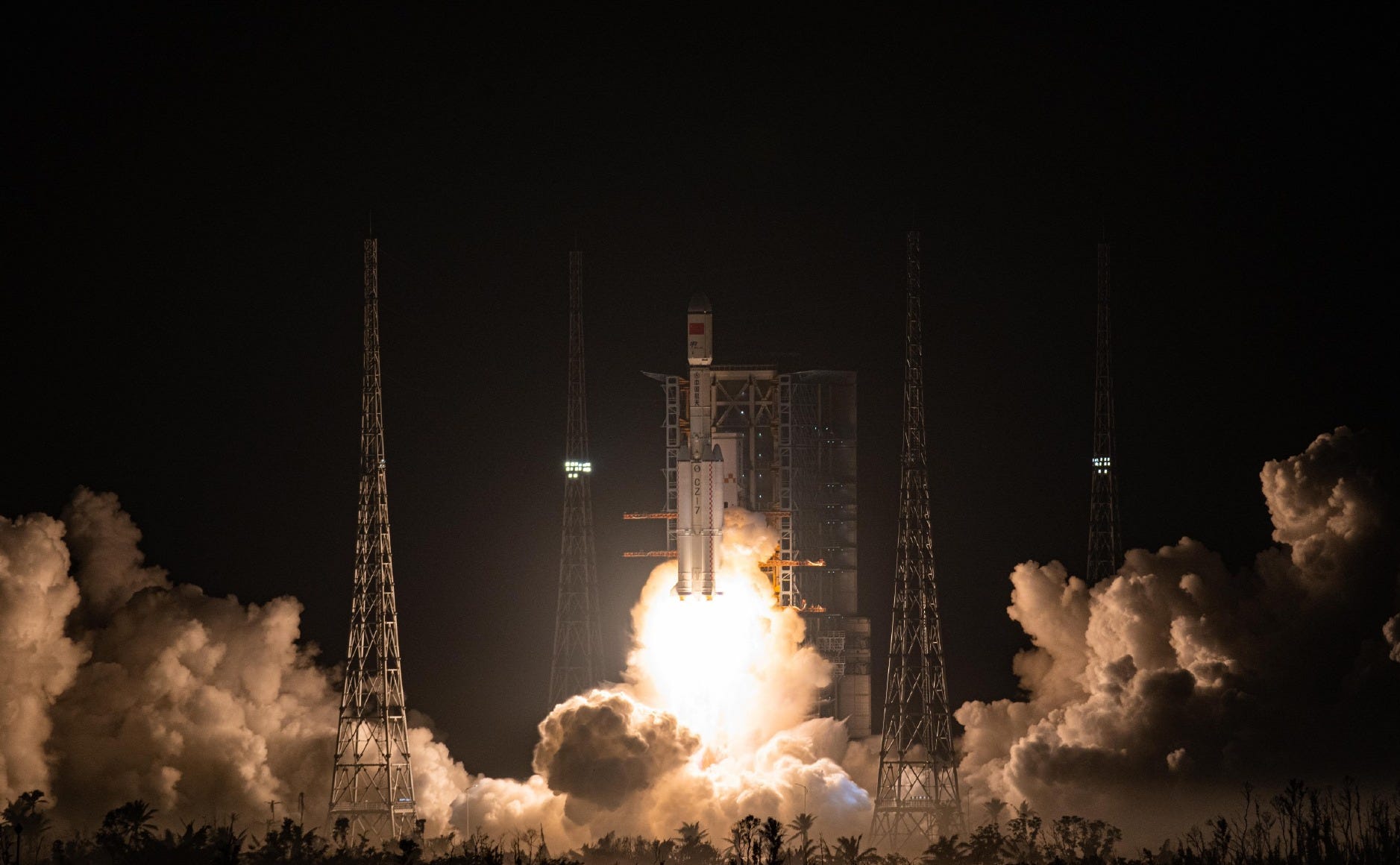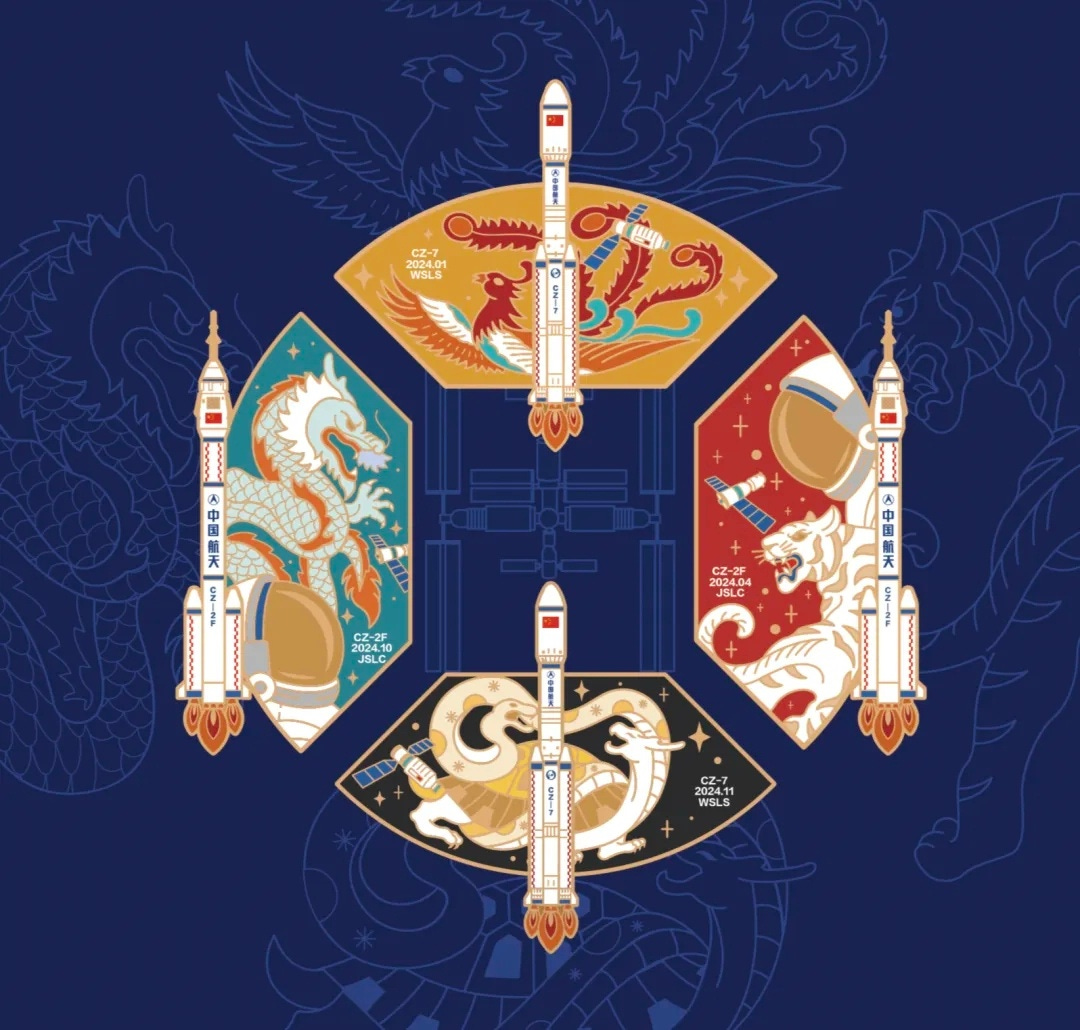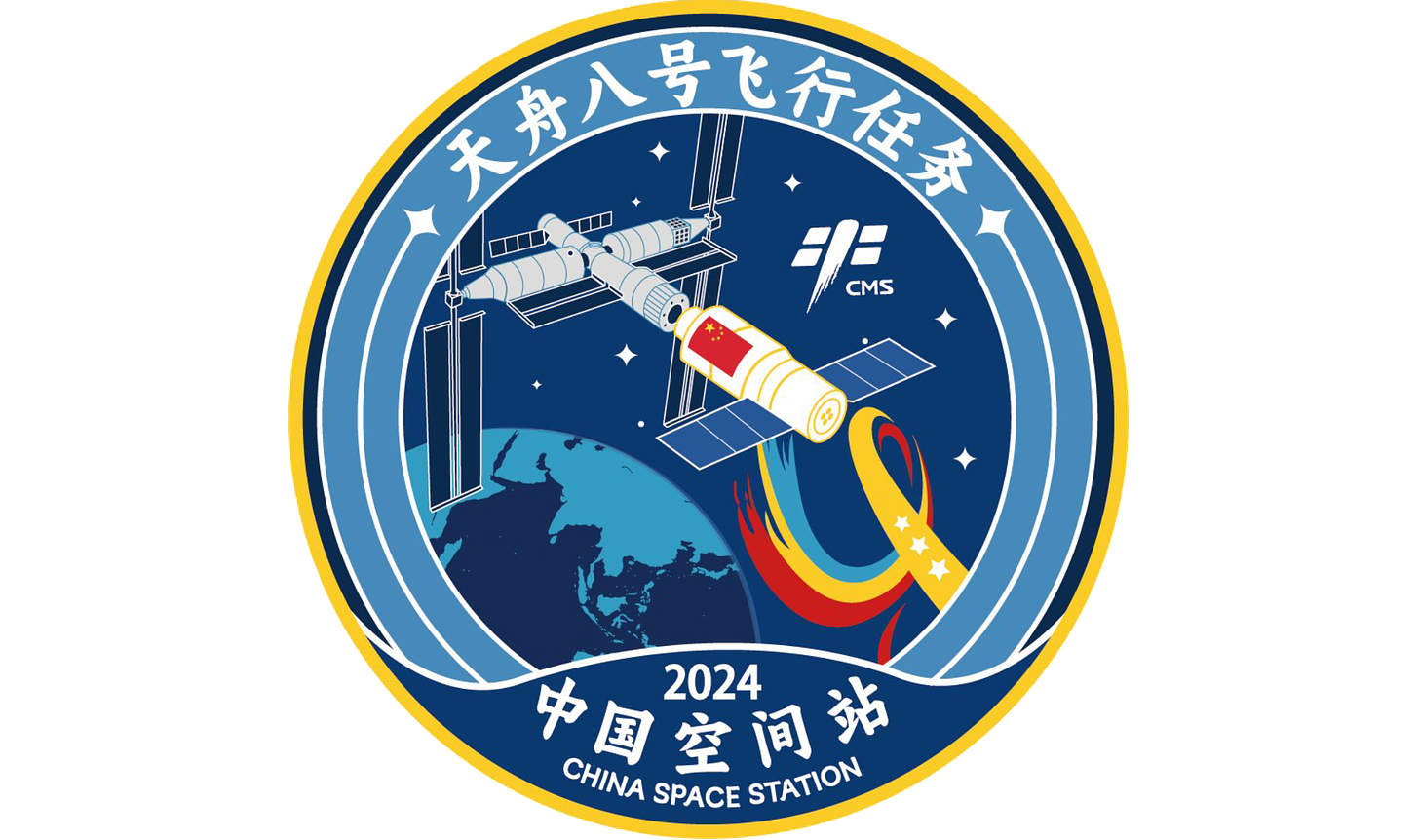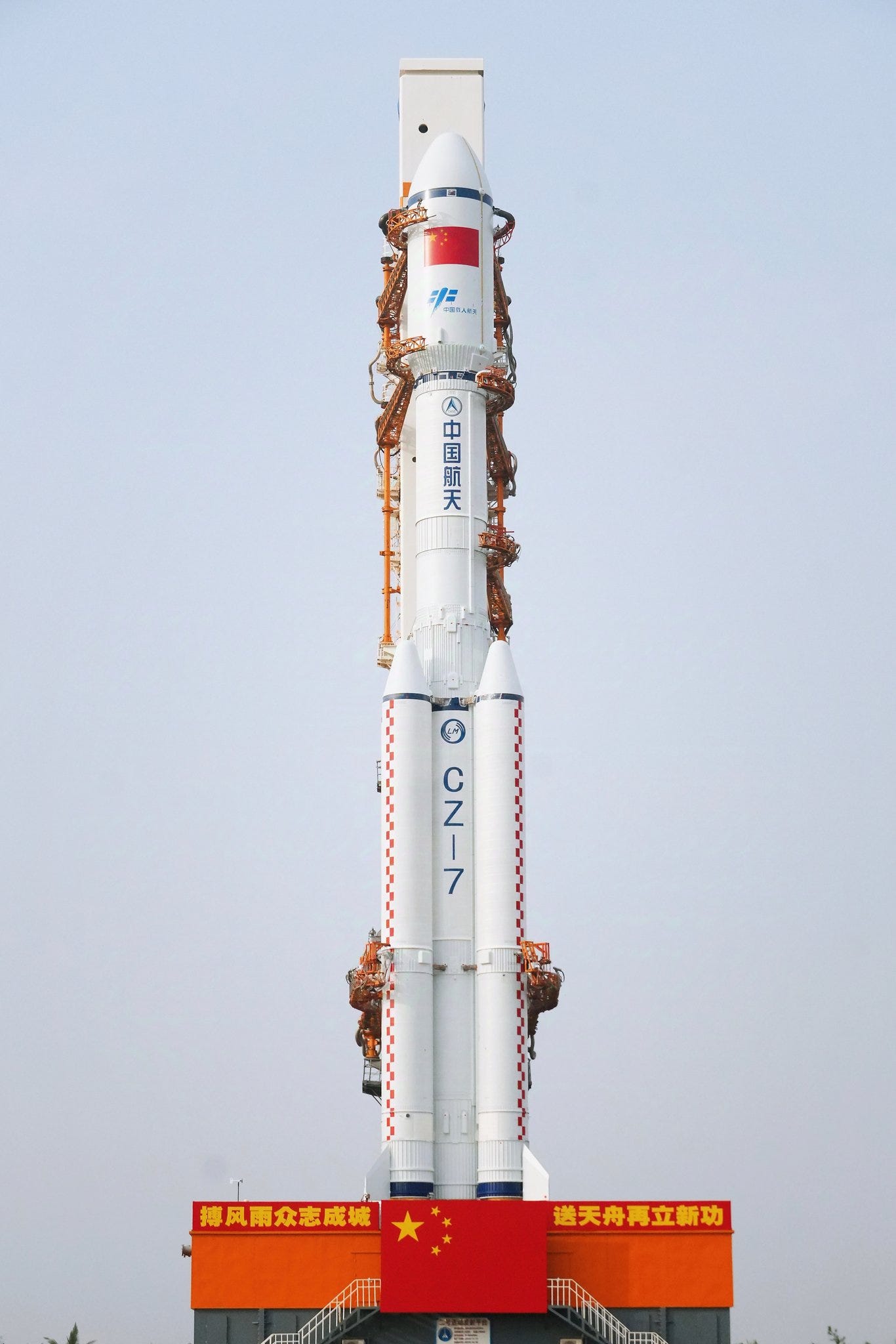Tianzhou-8 heads for Tiangong! [Long March 7 Y9]
The Tianzhou-8 cargo spacecraft is on its way to the Tiangong Space Station.

The seventh cargo resupply mission blasted off from Launch Complex 201 at the Wenchang Space Launch Site atop of a Long March 7 on November 15th. Liftoff occurred at 23:13 pm China Standard Time, or 15:13 pm Universal Coordinated Time.
Following launch, the Tianzhou-8 spacecraft separated from the Long March 7’s second-stage and began its multi-hour journey to the Tiangong Space Station. Tianzhou-8 will arrive at the station by docking to the Tianhe modules aft docking port, which Tianzhou-7 undocked from recently.
Onboard the spacecraft are supplies to support the Shenzhou-19 and Shenzhou-20 crew’s missions, these include clothes, food, and other consumables. Also onboard are gift packages for Spring Festival, Mid-Autumn Festival, and Dragon Boat Festival as well as birthday gifts for Wang Haoze (王浩泽) and Cai Xuzhe (蔡旭哲). Song Lingdong’s (宋令东) birthday is in August and he will likely not spend his birthday in orbit.
Scientific experiments being delivered by Tianzhou-8 are in the fields of materials science, microgravity fluid physics, space life, and biotechnology. Lunar brick samples are also being delivered to test their thermal and mechanical performance as well as the impacts of cosmic radiation, the first brick is expected to return toward the end of 2025 for study. A total of thirty-six experiments massing a total of 458 kilograms are onboard.
The launch of the Tianzhou-8 mission is also significant as it is the first launch from either of the Wenchang launch sites since Super Typhoon Yagi hit Hainan back in early September. After Yagi made landfall teams had been busy to resume normal launch operations, with their efforts culminating in today’s launch.
This was the 9th launch of the Long March 7, and the 17th launch of the Long March 7 series. Along with these, this was the 56th launch from China in 2024.

What is the Tianzhou cargo spacecraft?
The Tianzhou (天舟) spacecraft is an uncrewed autonomous cargo spacecraft developed by the China Aerospace Science and Technology Corporation to resupply the Tiangong Space Station. Tianzhou’s design is derived from China’s first space station, Tiangong-1, and is capable of delivering 7,400 kilograms of cargo to their space station and weighs 14,000 kilograms, the total volume of cargo can be up to forty cubic meters.
The spacecraft does not possess any way to return cargo back down to Earth and is destroyed upon re-entry. So far all Tianzhou spacecraft have been launched atop of the Long March 7 rocket. Tianzhou is also capable of transporting pressurized, semi-pressurized, and un-pressurized cargo. Current versions of the spacecraft generate electrical power using two solar panels. Propelling the spacecraft during orbital manoeuvers are four engines generating approximately 200 kilograms of thrust.
Launch Livestream Replays
Livestream replays of launch from China Central Television, CGTN, and 中国新闻社 on YouTube.
Check out the previous Long March 7 launch
What is the Long March 7?
This section is for those less familiar with China's Long March series of launch vehicles.
The Long March 7, developed by the China Academy of Launch Vehicle Technology, is a key part of China's crewed space efforts and launches at least one Tianzhou spacecraft each year. This vehicle utilizes a two-and-a-half-stage design and is fuelled by rocket-grade kerosene and liquid oxygen in its boosters, first, and second stages.
The payload capacity of the launch vehicle is currently as follows:
13,500 kilograms to Low Earth orbit
The Long March 7's first stage is equipped with two YF-100 engines that produce 245 tons of thrust using rocket-grade kerosene and liquid oxygen, complemented by four boosters, each with a YF-100 engine generating 122 tons of thrust, resulting in a combined thrust of approximately 733 tons. The second stage is powered by four YF-115 engines, which together generate 72 tons of thrust using the same fuel combination.
On the launchpad, the Long March 7 stands at 53.1 meters tall and weighs 597,000 kilograms when fully fuelled. The first and second-stage have a diameter of 3.35 meters, the four boosters are 2.25 meters in diameter, and the fairing has a diameter of 4.2 meters.
So far the Long March 7 has only flown from the Wenchang Space Launch Site, on the east coast of Hainan province.





![China launches sixth resupply mission to its space station [Long March 7 Y8]](https://substackcdn.com/image/fetch/w_1300,h_650,c_fill,f_auto,q_auto:good,fl_progressive:steep,g_auto/https%3A%2F%2Fsubstack-post-media.s3.amazonaws.com%2Fpublic%2Fimages%2F9c1bcb9a-a433-4fc9-9342-cd655244fef0_1000x664.jpeg)
